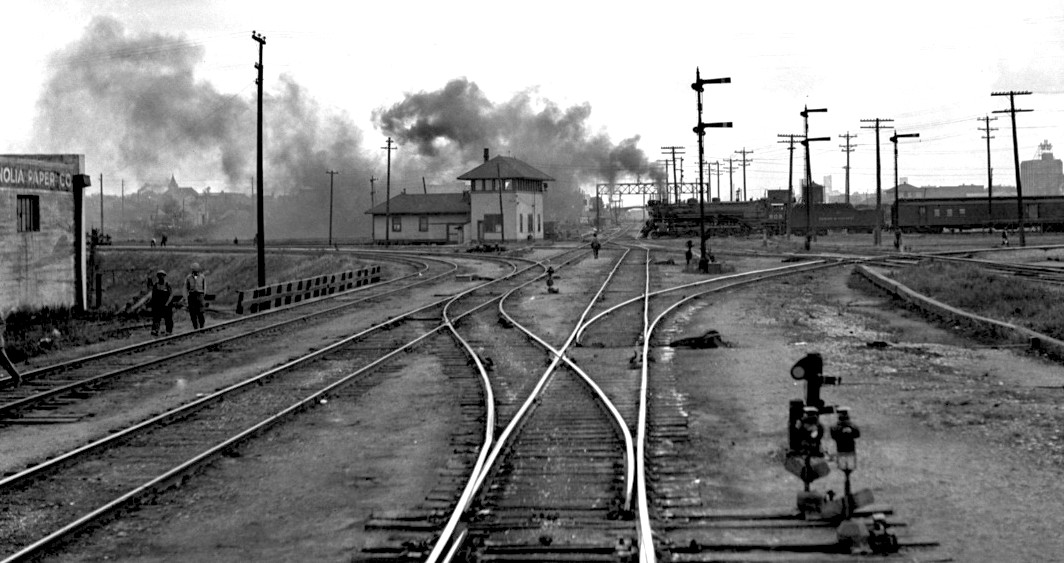
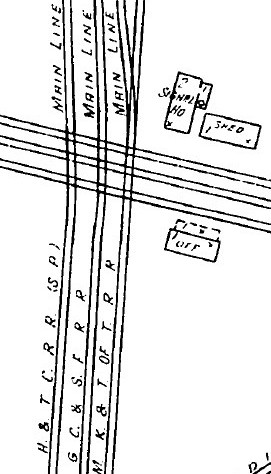
A Major Crossing of Four Railroads near Downtown Fort Worth
 |
 |
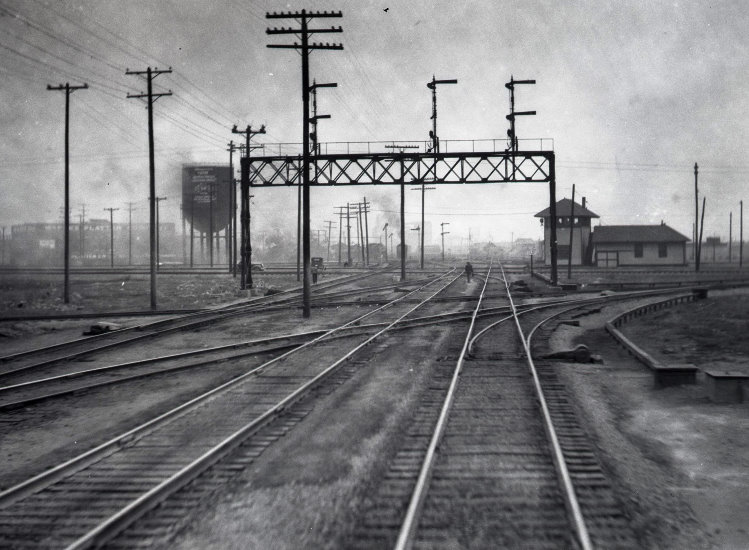
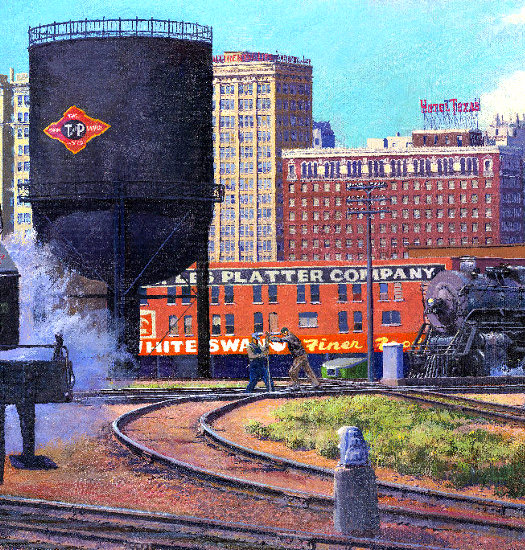
Fort Worth promoter B. B. Paddock created the "Tarantula Map" envisioning his town as a major railroad center with lines extending in all directions like the legs of a giant spider. This was truly a vision; he imagined it in 1873, three years before even the first railroad had reached Ft. Worth. That railroad was the Texas & Pacific (T&P) Railway building west from Dallas toward El Paso. Paddock's vision quickly became a reality as the T&P was joined by the Missouri, Kansas & Texas (MK&T, "Katy", which became simply MKT in 1923), the Gulf, Colorado & Santa Fe (GC&SF), the Fort Worth & Denver City (FW&DC, later simply FW&D), the Fort Worth & New Orleans (FW&NO), the Fort Worth & Rio Grande (FW&RG), the St. Louis, Arkansas & Texas (SLA&T, "Cotton Belt"), the Chicago, Rock Island & Gulf (CRI&G, which absorbed the earlier CRI&T, "Texas"), the International & Great Northern (with the "and" dropped and replaced by a dash in the early 1920s, henceforth "I-GN"), and, using Santa Fe trackage rights, the Trinity & Brazos Valley (T&BV.) These railroads built in or out of Fort Worth as follows:
1876 T&P:
Dallas (Eagle Ford) to
Fort Worth
1880 T&P: Fort Worth to Baird,
continuing to
El Paso
in 1881
1880 T&P:
Sherman (T&P) to
Fort Worth via Whitesboro; shared track, Whitesboro to
Fort Worth
1880
MK&T: Denison (MK&T)
to Fort Worth via Whitesboro; shared track, Whitesboro to
Fort Worth
1881
GC&SF:
Temple to
Fort Worth
1881 MK&T: Fort Worth to
Hillsboro
1882 FW&DC: Fort Worth (Hodge) to Wichita Falls
1886 FW&NO: Fort Worth to
Waxahachie
1887 FW&RG: Fort Worth to Granbury
(continuing to Brownwood via
Dublin)
1887
GC&SF: Fort Worth to Purcell, Oklahoma via Gainesville
1888 SLA&T: Greenville to Fort Worth
via Plano and Carrollton
1894
CRI&T:
Bowie to Fort Worth
1903
I&GN:
Waco to Fort Worth
1903
CRI&G:
Fort Worth to Dallas
1907
T&BV:
Cleburne
to Fort Worth via Santa Fe trackage rights
Some of these lines were owned by larger railroad companies when constructed or soon thereafter. Along with subsequent years of railroad consolidation, this ultimately distilled the ownership into a handful of companies competing for Fort Worth business. The focus of Fort Worth rail operations was the major junction near downtown where the east / west T&P main line crossed three major north / south lines: the Katy, the Santa Fe, and the Houston & Texas Central (H&TC, successor to the FW&NO and owned by Southern Pacific, SP). To control this junction, these four railroads collaborated to install an interlocker which was commissioned as Tower 55 by the Railroad Commission of Texas (RCT) on September 26, 1904. At that time, Tower 55's plant was an electric style interlocker built by Taylor Signal Co. with 122 functions and 89 levers. This was by far the largest interlocking plant in Texas with 75% more functions than the second place interlocker at that time, Tower 42. Tower 55 held the record for initial interlocking functionality until Tower 106 was commissioned with 139 functions in 1916.
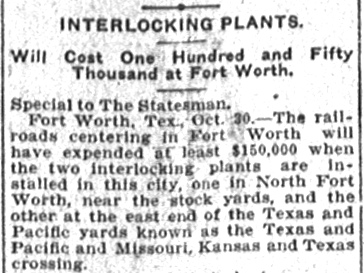
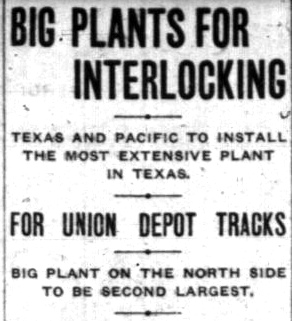

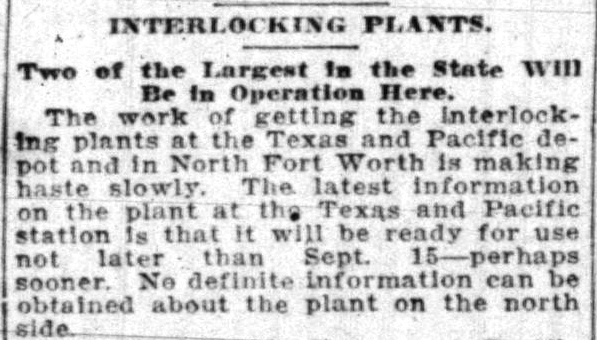
The planning, design and
construction of two large interlocking towers in Forth Worth was followed
closely in the press. The "North Fort Worth" references are to
Tower 60 which was commissioned by RCT about ten
months after Tower 55. Above Left to Right:
Austin Statesman, October 31, 1903;
Fort Worth Record and Register,
February 16, 1904; Fort Worth Record and Register,
August 6, 1904; Fort Worth Record and Register,
August 30, 1904
| Right: This image is taken from a photo Barriger snapped as he looked back at Tower 55 from the rear of his westbound train. Barriger is facing generally east with the west side of Tower 55 visible. Because the T&P tracks curve slightly south on the west side of the diamond, the south wall of the one-story shed can be seen behind the tower. T&P's East (City) Yard is in the distance. | 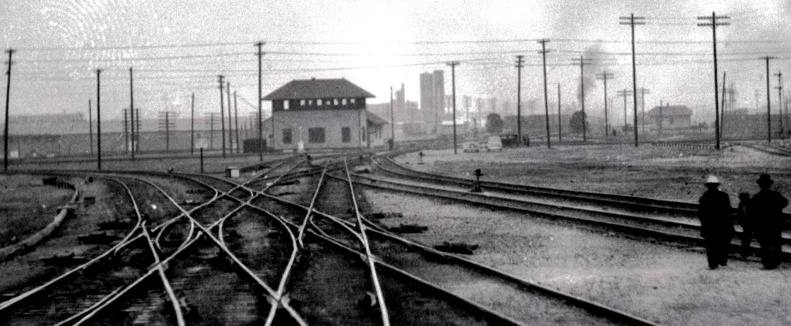 |

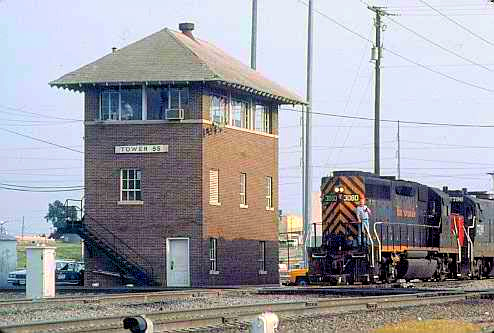
Above Left:
Glenn Anderson took this photo of CRI&P 1297 passing Tower 55 northbound on
Feb 26, 1975. This 3-story brick structure located in the southeast quadrant of
the diamond replaced the wooden tower seen in the Barriger photos, although the
date it became operational is undetermined. Historic aerial imagery shows
that the brick tower was in place by 1946. Note the "F.W. Tower" sign on the
side of the building. Above Right:
The same view of Tower 55 is shown in this photo taken by Myron Malone on July
3, 1989. The brakeman riding the Denver & Rio Grande locomotive is H. L. Hunt.
By this time, the "F. W. Tower" sign had been replaced by a "Tower 55" sign.

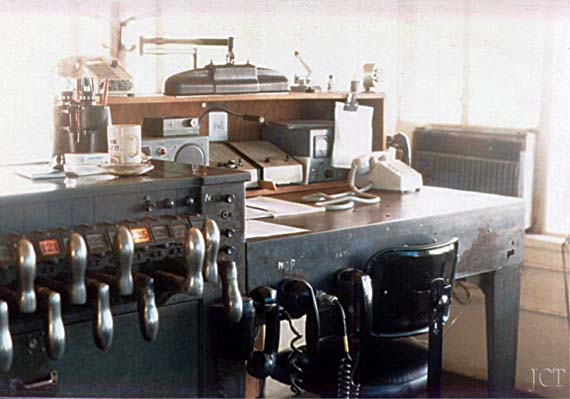
Above: view to the north from
Tower 55, and the tower operator's desk (photos by Jay Tatum)
Below Left: Howard Johnson supplies
this undated photo of him working the levers in Tower 55.
Below Right: A Katy locomotive
passes Tower 55 northbound in April, 1973. The tall T&P office building and
passenger depot stands in the background. Note how the T&P tracks make a slight
curve to the left (south) beyond the diamond. An opposite view of this curve can
be seen in Barriger's photo above facing east, except in those days, the tower
was north of the T&P tracks. (J. Parker Lamb photo, Center for
Railroad Photography and Art)

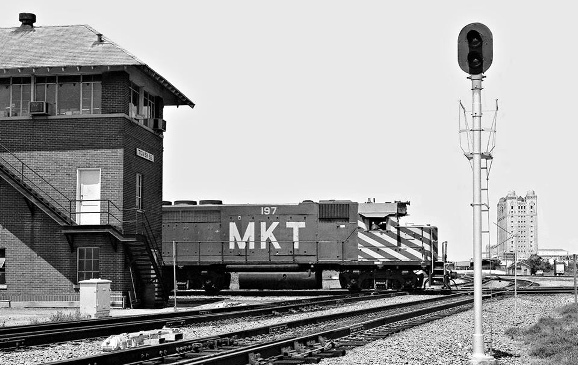
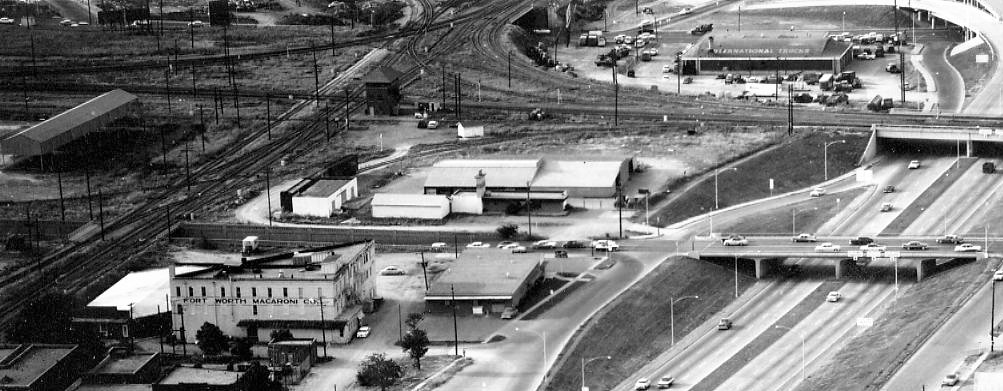
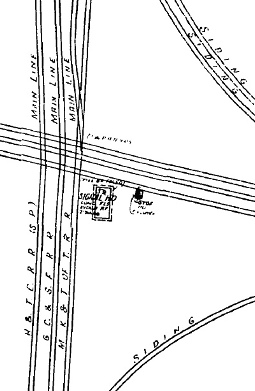
Above Left: This 1958 image shows Tower 55 in a dark
light, with the future I-35W freeway already having limited access nearby. The
view is to the north-northwest with the Fort Worth Macaroni Co. factory visible
at the bottom of the image. It changed its name a year later to the O. B.
Macaroni Co. While pasta is no longer manufactured there, the building has been
preserved for other uses. Above Right:
The tower's location in the southeast quadrant is illustrated by the 1951 update
to the 1926 Sanborn Fire Insurance map set of Fort Worth. Under magnification,
the only legible writing says "Signal Ho." (house.)
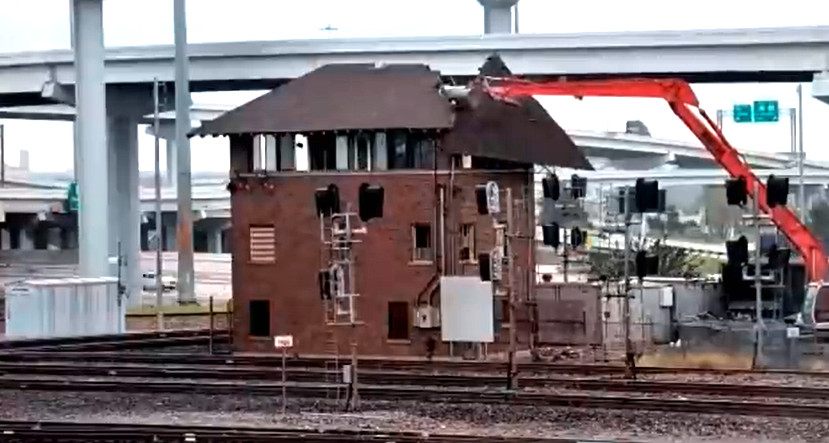 |
Left: On
November 14, 2022 at precisely 11:00 am CST, the final phase of Tower
55's demolition commenced. It was completed on November 15. A livestream
over YouTube of the Tower 55 crossing generated by Virtual Railfan's
cameras captured the destruction (see summary video
here.) Below: Doyle Roundtree took this photo of the demolished tower's debris pile on November 16,2022. 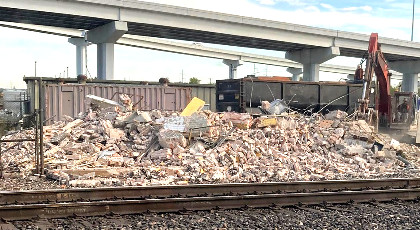 |